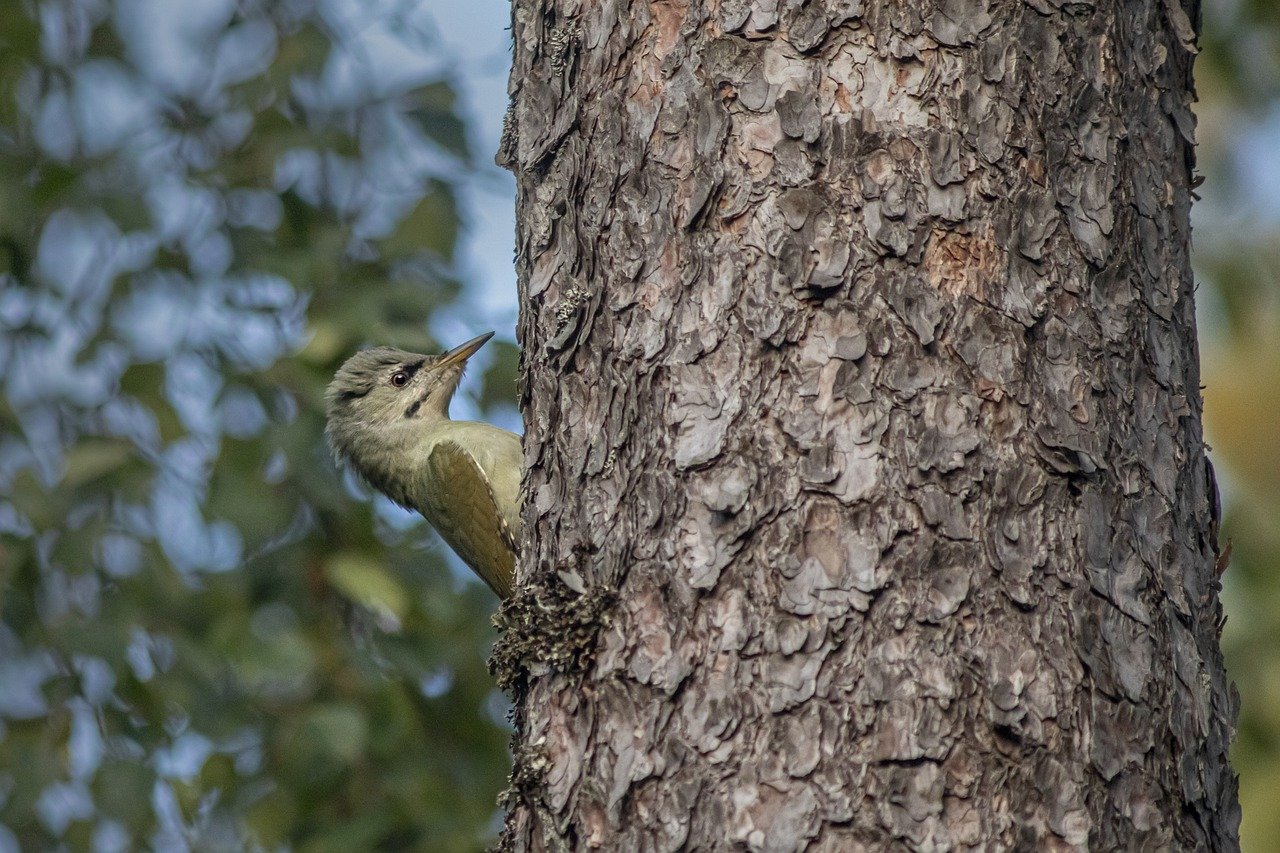The Grey-headed Woodpecker (Picus canus) is a medium-sized woodpecker known for its distinctive coloration and unique behaviors. Here are some key details about this bird:
Appearance
- Size: The Grey-headed Woodpecker measures about 25-30 cm (10-12 inches) in length, with a wingspan of around 38-40 cm (15-16 inches).
- Coloration:
- Head: As the name suggests, the head of the Grey-headed Woodpecker is grey. Males have a small red crown, while females lack this red patch and are entirely grey-headed.
- Body: The back and wings are green, with a yellowish rump. The underparts are lighter, usually a pale grey or whitish color.
- Bill: The bill is strong, pointed, and dark, suitable for drilling into wood.
Habitat
- Range: This species is found across a wide range in Europe and Asia, from Scandinavia and the British Isles in the west to Japan and China in the east.
- Environment: The Grey-headed Woodpecker prefers mixed and deciduous forests, particularly those with old trees and plenty of deadwood. It can also be found in parks, orchards, and gardens.
Behavior
- Diet: Their diet primarily consists of ants and other insects, which they extract from tree bark and soil. They also eat fruits, berries, and seeds, especially in winter.
- Foraging: They forage both on trees and on the ground. Unlike many other woodpeckers, they spend a significant amount of time feeding on ants found on the forest floor.
- Drumming: Like other woodpeckers, they use drumming to communicate and establish territories, though their drumming is not as loud or frequent as some other species.
Life Cycle
- Breeding Season: The breeding season typically runs from April to June.
- Nesting: They excavate nest cavities in dead or decaying trees. Both males and females participate in the excavation process.
- Eggs and Incubation: The female lays 5-8 eggs. Both parents share the incubation duties, which last about 14-17 days.
- Fledging: The chicks are altricial and fledge about 24-28 days after hatching. They remain dependent on their parents for several more weeks.
Adaptations
- Tongue: The Grey-headed Woodpecker’s tongue is long and sticky, ideal for capturing ants and other insects.
- Drilling: Their strong bill and reinforced skull allow them to drill into wood without injury.
Ecological Role
- Pest Control: By feeding on ants and other insects, they help control pest populations in their habitats.
- Cavity Nesting: As cavity nesters, they create nest sites that can be used by other species once they abandon them, thus contributing to the biodiversity of their environment.
Conservation
- Status: The Grey-headed Woodpecker is listed as Least Concern by the IUCN, but local populations may face threats.
- Threats: Habitat loss due to deforestation and changes in land use are primary threats. Removal of deadwood and old trees can reduce available nesting sites.
- Conservation Efforts: Preserving mixed and deciduous forests, maintaining old trees, and ensuring the presence of deadwood in forests are essential for the conservation of this species. Sustainable forestry practices and the creation of protected areas also benefit their populations.
The Grey-headed Woodpecker is an important and beneficial species in its habitat, contributing to the control of insect populations and the creation of nesting sites for other animals. Its presence is a good indicator of a healthy and diverse forest ecosystem.
Visited 1,021 times, 4 visit(s) today
Views: 1348
Subscribe to the newsletter:
